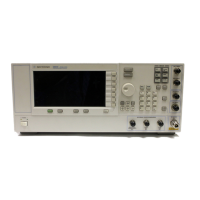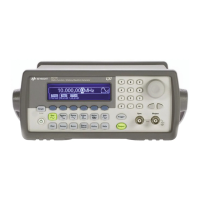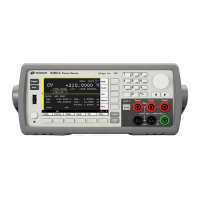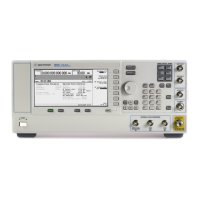80 E8257D/67D, E8663D PSG Signal Generators Service Guide
Troubleshooting
Troubleshooting Assembly–Level Problems
1204 RF Path
This test checks for a dc voltage on the A10 ALC from the A23 Lowband
Coupler/Detector and
A24 Highband Coupler and A25 Highband Detector.
1. Connect a spectrum analyzer to the RF output of the signal generator.
2. Turn the RF power on and verify the presence of an RF signal on the
output.
— If no RF signal is present, troubleshoot the RF path problem (see
“Troubleshooting the RF Path” on page 122).
3. If an RF signal is present on the RF output, set the signal generator to
4 GHz and 0 dBm.
4. Measure the dc voltage on the cable going to J3 of the A10 ALC. The
signal should be > –600 mV.
— If the signal at J3 is good, go to step 6.
5. If no dc signal is present on the cable to J3, check the output at the
highband detector.
— If the signal is good at the detector, replace the cable.
— If no signal is present at the output of the highband detector,
replace the highband detector.
6. If the signal at J3 is good, set the signal generator’s frequency to <1 GHz,
the power to 0 dBm, and measure the dc voltage on the cable going to J5
on the A10 ALC.
— If the dc voltage is –5.25 Vdc, replace the A10 ALC.
7. If other dc voltages are present, check for dc voltage on the output of the
lowband detector.
— If a dc voltage is present, replace the cable.
— If no dc voltage is present, replace the lowband detector.
1205 LB Pulse Mod
Lowband Pulse On
1. Disconnect the cable from J5 of A10 ALC, and connect the cable to a DVM
(this is the lowband detector output).
2. On the signal generator, set the following:
Center Frequency: 3 GHz
Power: +20 dBm
Pulse Modulation: On

